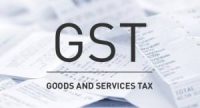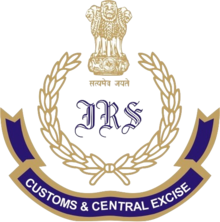
Goods and services tax (GST) implementation is going to be a watershed in the re-imagining of India’s supply chains. GST will make supply chains more efficient, but there is a serious drawback in the current draft—GST makes supply chains vulnerable to upstream compliance-related disruption.
Consider a three-stage supply chain with an upstream Firm A selling goods or services to Firm B which then sells to downstream Firm C. Assume a tax rate of 20%. Firm A sells goods worth Rs1 crore to Firm B, raises an invoice of Rs1.2 crore, gets paid, and deposits Rs20 lakh tax. Firm B now raises an invoice of Rs1.44 crore (Rs1.2 crore plus Rs24 lakh GST) on Firm C. Firm B is eligible for input tax credit of Rs20 lakh and hence needs to deposit Rs4 lakh as tax. Let us assume that Firm B fails to pay this tax within the stipulated time window. Firm C raises an invoice of Rs1.8 crore (Rs1.5 crore plus Rs30 lakh GST) on an end consumer. Firm C has a tax liability of Rs6 lakh after claiming input tax credit of Rs24 lakh. However, since Firm B has failed to pay tax, government would reverse the provisional input tax credit allowed to Firm C. If Firm B eventually pays its tax dues, the input tax credit for Firm C would be re-allowed, but if it doesn’t, Firm C would be denied the input tax credit.
The effect on Firm C would be drastic. It has to pay an unforeseen and unjust tax liability of additional Rs24 lakh, which includes Rs4 lakh tax already paid to Firm B, and Rs20 lakh already deposited as tax by Firm A. This could convert a profitable sale for Firm C into a loss and jeopardize its cash flow. Firm C would be penalized for an act committed by Firm B, who incidentally was authorized by the GST framework to collect the tax and hence act as an agent of the government.
GST rules stipulate the action to be taken against Firm B due to delay or non-payment of tax. These actions include interest, penalty and possible prosecution. Such rules are standard in GST implementations across the world. What makes the Indian GST rules stand out is the insistence that input tax credit to Firm C is allowed only if “… the tax charged in respect of such supply has been actually paid to the Government” (16 (2) (c) in the CGST and other GST laws, and again referenced in other clauses linking it to the existence of a “valid return” from Firm B, which is defined as return furnished where self-assessment tax has been paid in full). With this one clause, Indian lawmakers risk converting a potentially transformative economic change into a supply chain disaster.
A “valid return” is the end state of a long list of activities to be performed by Firm B. These include: (i) uploading the data on invoices, (ii) checking the accuracy of the data reported by Firms A and C, (iii) preparing a return, and (iv) paying tax. If Firm B fails to do these, it would face interest on the tax liability, penalty and prosecution; its rating would be downgraded and shared publicly. It might be blacklisted and its cash flow situation may worsen. So there is a real threat to Firm B if it defaults. Perhaps that is the rationale for this GST requirement.
Denying input tax credit to Firm C would doubtless put enormous pressure on Firm B to not default on tax payment in the first place. We wonder whether this pressure is legal, ethical, and economically justified. Defaults can and do happen. Designing a system to recover from default is as important as designing to avoid default. The entire supply chain becomes fragile if Firm C is denied input tax credit when it is not at fault.
If Firm B defaults on tax payment, disruption in cash flow would occur for a number of downstream firms that purchase from Firm B. It might generate a domino effect, with several downstream firms defaulting in tax payments. Tax authorities would be under pressure if a large number of firms were to default. It would surely generate a wave of litigation.
Note that the severity of the increased tax liability of Firm C could be unrelated to the tax liability of Firm B. Even if a small business defaults in tax payment, it can have a large domino effect! Who knows? There might be a rogue Firm B which seeks rents by holding a larger Firm C to ransom. The last thing GST should do is make downstream firms vulnerable to extortion.
If Firms B and C stand to lose in case of a tax default, who gains? Interestingly, in our example, the government would have collected Rs30 lakh (20 by Firm A, 4 by Firm B, and 6 by Firm C) if there was no default, and Rs50 lakh (20 by Firm A and 30 by Firm C) if there is a default by Firm B. The government is thus the primary beneficiary of this rule related to input tax credit. It is using this rule to reduce the chances of a default, pass on the job of ensuring compliance to downstream firms, and benefit in case of a default. It is a remarkable transfer of tax-default risk and tax-compliance cost from the government to downstream firms in a supply chain, except that the resultant supply-chain disruption risk is much more than the original tax-default risk.
We hope the government corrects this anomaly. The solution lies in delinking input credit from “valid returns” and instead linking it to invoices registered with GSTN. If the tax liability related to the invoice is outstanding, the government should penalize the defaulting firm and downgrade its rating. Similarly, if a firm claims input tax credit against non-existent supplies or claims higher amounts, penal interest, prosecution, and downgrading of rating should follow. This would send a strong signal to defaulters and dishonest firms, localize the disruption, and build a culture of tax compliance.
Source:livemint





Leave a Reply
You must be logged in to post a comment.